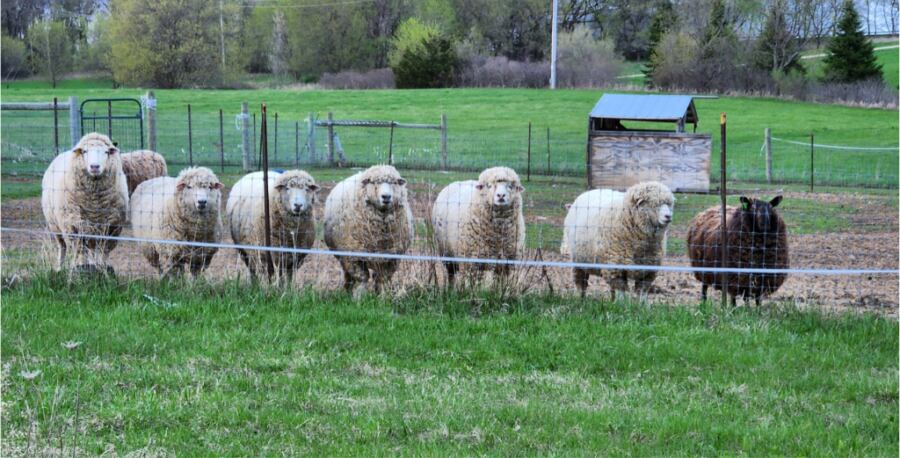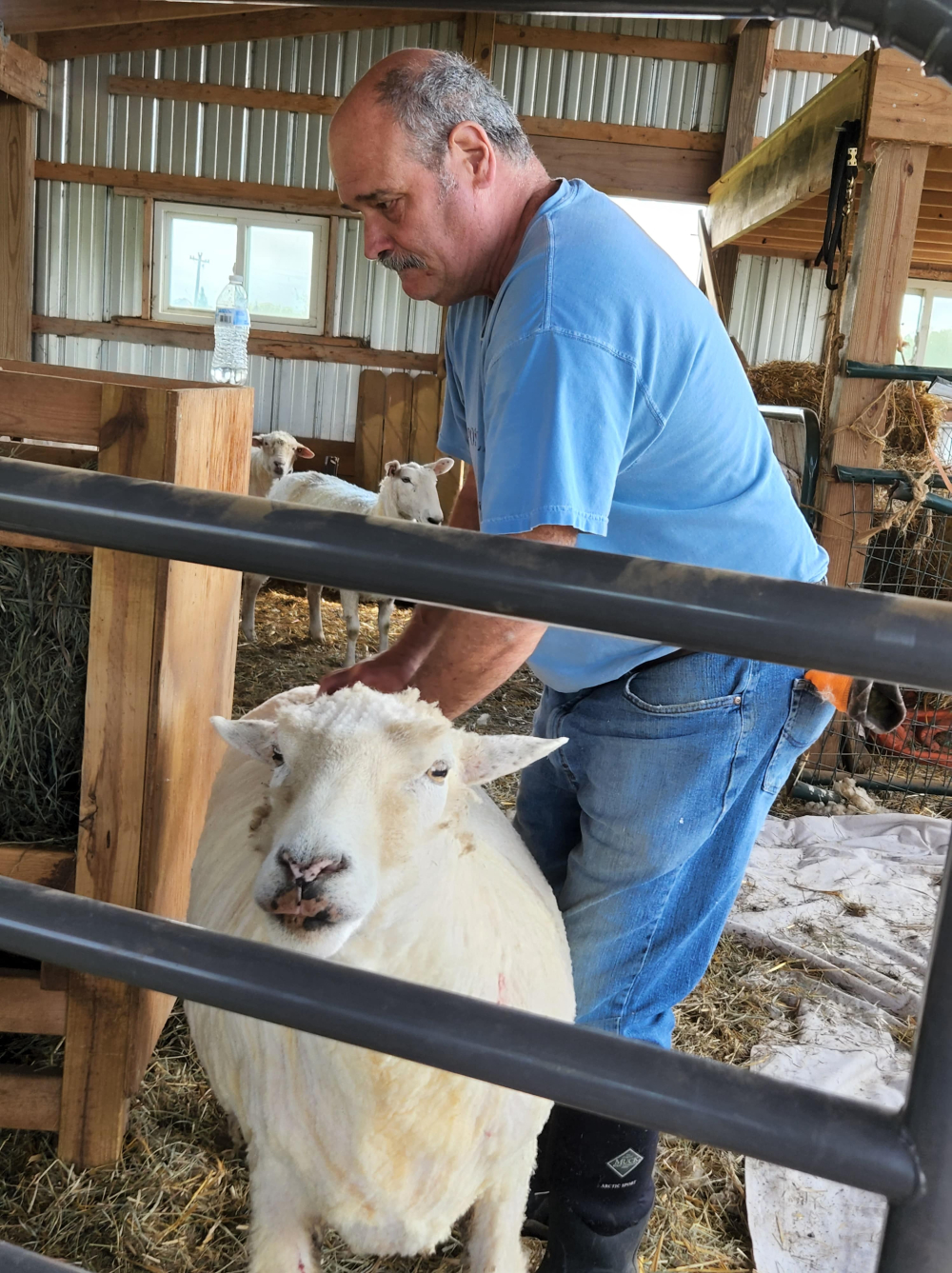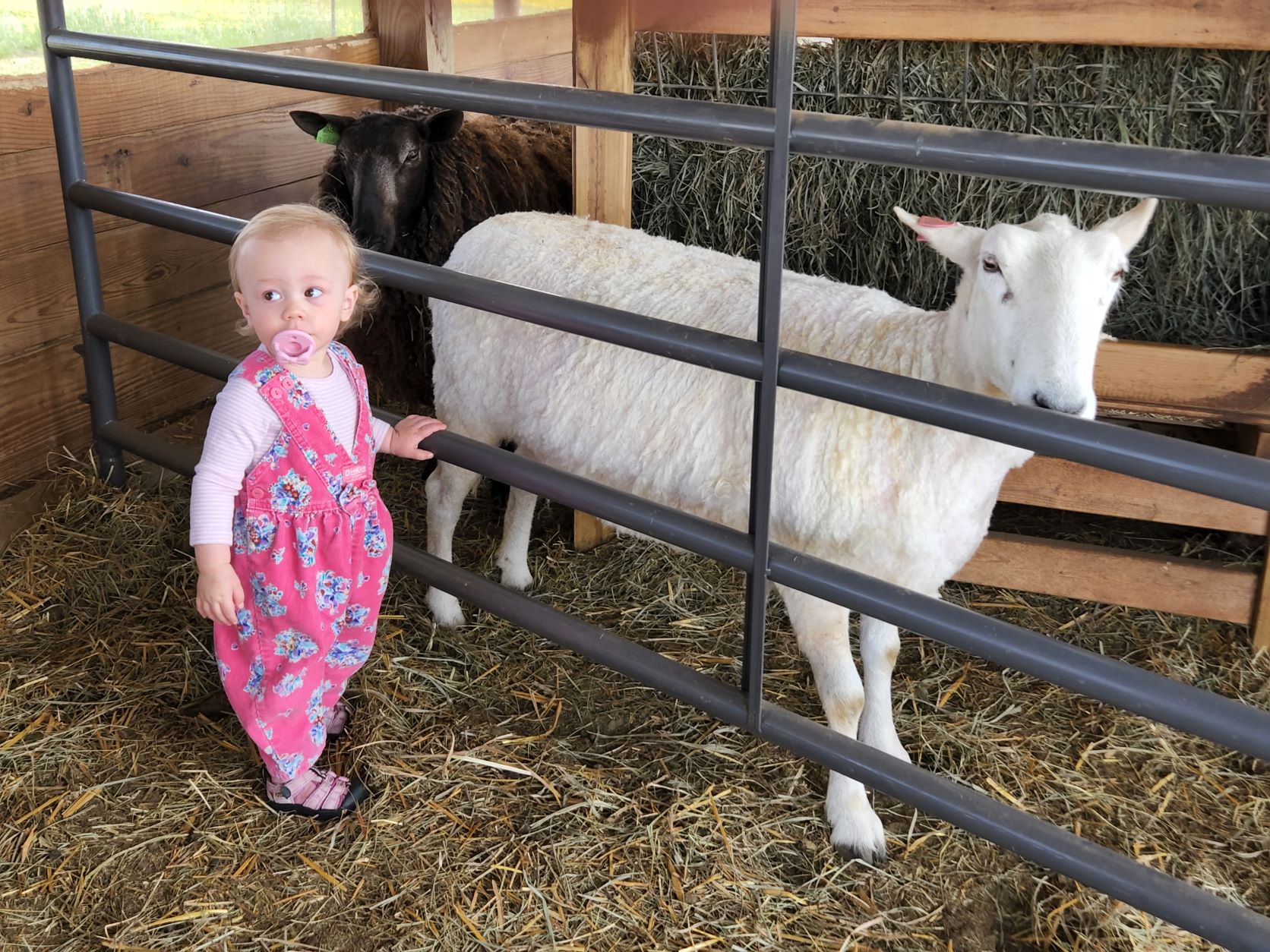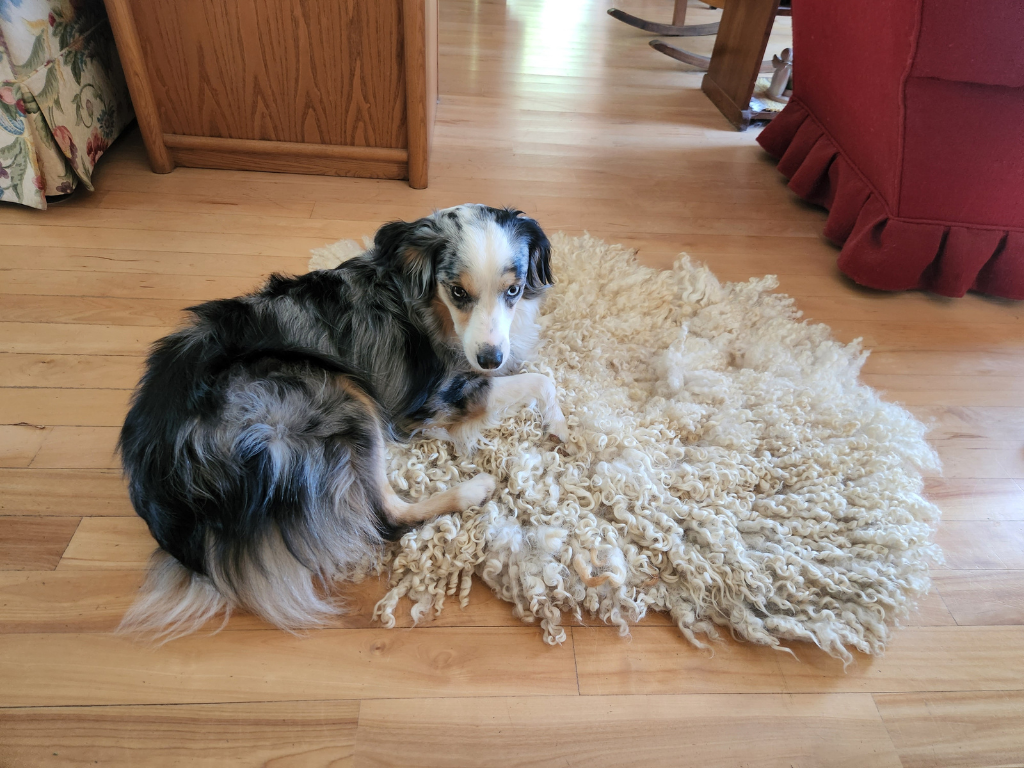

I recall memories of my mother, Kitty Barthen (nee: Bobst) expressing her love for sheep to me as a child and young adult while knowing that the donkey farm where I grew up could only be used for raising a large, diverse herd of donkeys for the fun-loving game of donkey ball. We did enjoy Spot, our beloved pony, a horse, and my younger brother raised a few pigs for his 4-H project. My mother’s unfulfilled interest in this gentle animal breed stayed with me, and we purchased our original Corriedale sheep in 2016 from a Nebraska rancher. Although we maintain a small flock of sheep for fiber and companionship, others raise sheep for milk and meat, with the possibility of many useful products.
I attended many workshops in Wisconsin and northwestern Minnesota to “feed” my desire to learn more about sheep and fiber. The Spooner Research Station formerly hosted annual clinics to interact with others who shared a passion for this versatile farm animal. The annual Shepherd’s Harvest, Sheep, and Wool Festival at the Washington County Fairgrounds, Minnesota, and Wisconsin County Sheep and Wool Festival in Jefferson, Wisconsin are also excellent opportunities to learn more about wool sheep.

Get Quick Support
Make Online Order
The white or natural-colored breed is a cross of Merino-Lincoln-Leicester breeds that was developed first in New Zealand during the late 1800s and shortly after that in Australia. First transported by the U.S. Dept. of Agriculture to Wyoming in 1914, Corriedales produce a dense and medium soft fine wool with long staple length, well-defined even crimp (a lot of loft and elasticity), some luster, and light shrinkage. It is considered a reliable, multipurpose fiber.

10-20 pounds (4.5 – 9 kg), averaging about 12 pounds (5.4 kg)
3 – 6 inches (7.5 – 15 cm), tending to 3 ½ - 6 inches (9-15 cm) in North America.
25-31 microns (spinning counts 50s – 58s) in North America. (Up to 32 microns in New Zealand and Australia!)
Normally rectangular and dense, and often soft-feeling, with flat tips. Crimp is clearly defined along the full length of the fiber.
Available are yarns, fleeces, and other accessories in natural white. The fiber takes dye color well.
Spinning (best to wash the wool first to eliminate the “grease.”) Used for knitting, crocheting, weaving, and felting (dry needle felting or wet felting). Corriedale is wonderful for sweaters, socks, blankets, pillows, and other clothing and household textile choices. It is also reasonable for dry-felting dryer balls, wet felting with other natural fibers like silk and bamboo, and felting over sheep or goat soaps to act as an exfoliate.
In the English Longwool Family, this fun, perky breed originated in Scotland in 1767 by breeding Dishley rams with either Teeswater or Cheviot ewes or maybe a combination of the two. The breeders developed a very popular breed that came to the U.S. in the mid-19th Century; although a 1920 agricultural census documents that 727 purebred animals came to America, no one knows when or how they crossed the Atlantic!
This versatile, easy-to-handle fiber is often coarse and may feel wiry until it is “worked” and becomes somewhat soft.

8-12 pounds (3.6-5.4 kg) average, although top fleece weights may reach 20 pounds (91 kg); yield 60-80 percent
4 (half year) – 10 (full-year) inches (10-25.5 cm)
30-38.5 micros (spinning counts 36s-50s). It may not be surprising that the micron counts in New Zealand and Australia may be up to 40 microns!
Beautiful tight curls and luster, with purling characteristic; not as openly wavy as Leicester Longwood breed, nor as slim as Bluefaced Leicester. Locks are individually distinct, with tips ending in “charming curls.”
We have white and shades of light and dark brown in the flock at Blue Ridge Growers. Due to the fleece luster, Border Leicesters will take dyes clearly and well.
Spinning produces a smooth and sleek buffed-looking gleam in the finished yarn. It can be spun from the lock, picked, spun, combed, or flicked. Fiber is great for household textiles, pillows, upholstery fabric, and durable bags. Finer fleeces can be spun and used for sweaters, mittens, hats, and socks. We use the breed to create beautiful, medium-long staple rugs wet felted on the backside with Corriedale, Finnsheep, or other appropriate sheep fiber. These vegan or “no-kill” rugs are a favorite for customers. Also useful for a warm “throw” on chilly nights or as a beautiful wall hanging to showcase your great room!

